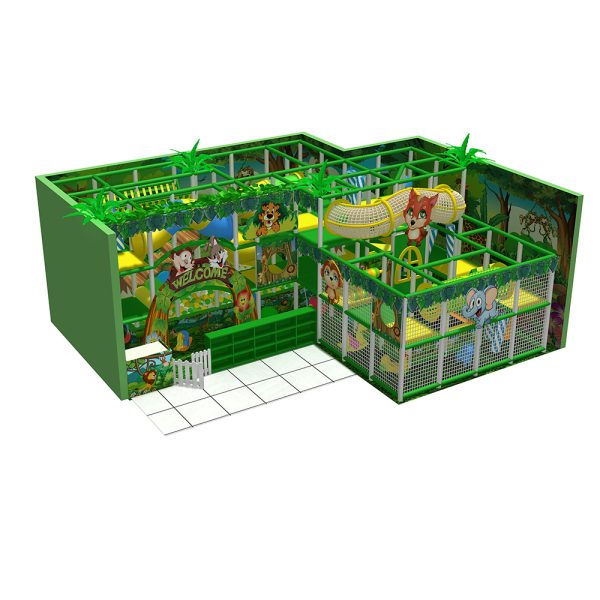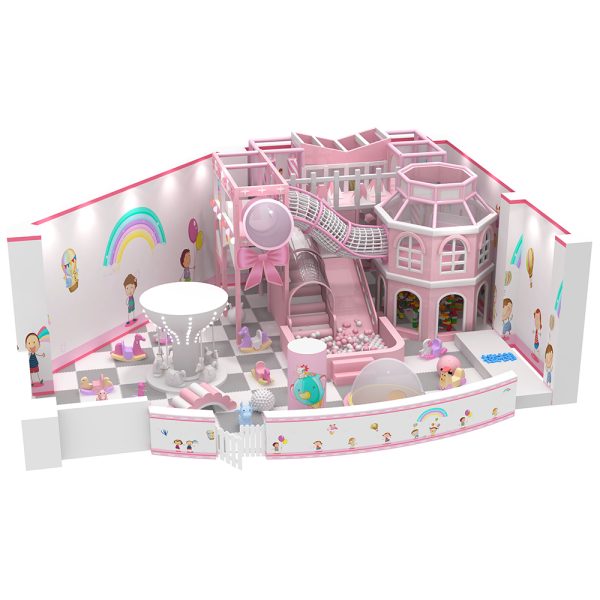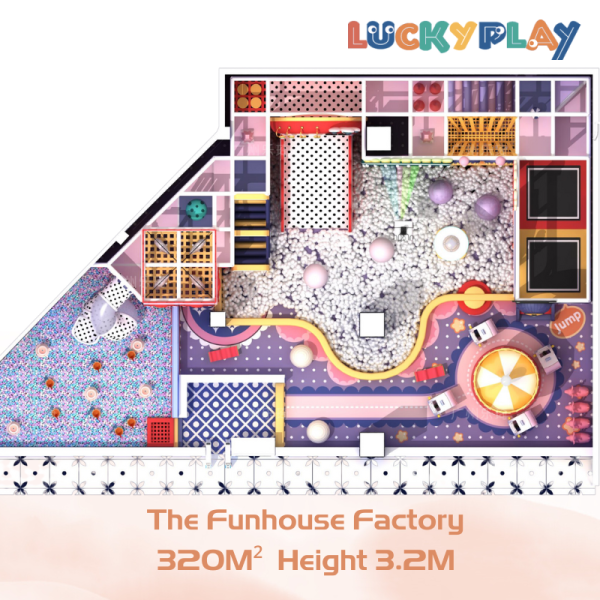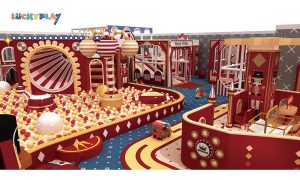In the realm of childhood, playgrounds stand as sanctuaries of joy, imagination, and growth. Yet, behind the laughter and endless energy lies a meticulously crafted world of playground equipment, evolving alongside societal needs and developmental understandings. From the humble beginnings of makeshift swings and slides to the technologically advanced structures of today, playground equipment has undergone a remarkable transformation.
In this exploration, we delve into the rich tapestry of the evolution and importance of playground equipment, illuminating its crucial role in fostering both fun-filled memories and fundamental developmental milestones in children. Join us on a journey through time and design, where every twist of a slide and sway of a swing signifies not just moments of play, but pathways to holistic growth and well-being.

What is Playground Equipment?
Playground equipment constitutes a diverse array of structures and apparatus specifically designed to facilitate physical activity, social interaction, and imaginative play among children. Ranging from traditional staples like swings and slides to more contemporary additions such as climbing walls and sensory play panels, playground equipment encompasses a broad spectrum of elements carefully engineered to engage, entertain, and educate young minds.
These installations are typically found in designated play areas, parks, schools, and recreational spaces, serving as vibrant hubs where children can unleash their creativity, develop essential motor skills, and forge lasting friendships through active play.
Historical Overview: From Simple Structures to Innovative Designs
The evolution of playground equipment mirrors the changing landscapes of childhood and urban development, tracing its origins back to ancient civilizations where rudimentary forms of play apparatus were crafted from natural materials like wood and stone.
However, it wasn’t until the late 19th and early 20th centuries that playgrounds as we know them began to take shape, spurred by the growing awareness of the importance of outdoor recreation and physical activity for children’s health and well-being.
In the early stages of its development, playground equipment comprised simple structures such as swings, seesaws, and merry-go-rounds, often constructed from basic materials found in local communities. These initial designs, while rudimentary, laid the foundation for the modern playground movement, emphasizing the need for safe and accessible spaces where children could engage in unstructured play under adult supervision.
As urbanization accelerated and industrialization flourished, playground equipment underwent a significant transformation, with innovations in materials, engineering, and design giving rise to more elaborate and interactive structures.
The mid-20th century witnessed the introduction of steel and concrete as primary construction materials, enabling the creation of larger and more durable play installations. Iconic structures like jungle gyms, monkey bars, and climbing frames became synonymous with playgrounds across the globe, offering children a plethora of opportunities to test their physical limits and unleash their adventurous spirits.

In recent decades, advancements in technology and an increased focus on inclusive design have further revolutionized the landscape of playground equipment, ushering in a new era of innovation and creativity. From accessible swings and sensory play elements designed for children with disabilities to interactive digital installations that blend virtual reality with real-world exploration, today’s playgrounds are embracing diversity and pushing the boundaries of traditional play experiences.
The Importance of Play in Child Development:
Play is not merely a pastime for children; it is a fundamental aspect of their growth and development. Through play, children explore the world around them, experiment with new ideas, and cultivate essential skills that lay the groundwork for future success. Whether engaged in imaginative role-play scenarios, physical activities like climbing and jumping, or social interactions with peers, every playful interaction contributes to various aspects of their cognitive, emotional, and physical development.
Research in developmental psychology has underscored the critical role of play in shaping cognitive functions such as problem-solving, creativity, and decision-making. By engaging in open-ended play experiences, children learn to think flexibly, adapt to new situations, and approach challenges with curiosity and confidence.
From a physical standpoint, playground equipment plays a pivotal role in promoting gross motor skills, balance, coordination, and spatial awareness. Climbing structures, slides, and swings offer opportunities for children to engage in vigorous physical activity, building strength, endurance, and agility in the process. Additionally, sensory-rich play experiences, such as sandboxes and water play areas, stimulate the senses and foster sensory integration, laying the foundation for enhanced sensory processing and perceptual skills.
Safety Standards and Regulations: Ensuring Fun Without Compromise:
While playgrounds are designed to promote enjoyment and learning, ensuring the safety of children is paramount. Recognizing the inherent risks associated with outdoor play, governments, regulatory bodies, and playground manufacturers have established stringent safety standards and guidelines to mitigate potential hazards and minimize the risk of injuries.
Safety standards for playground equipment encompass various aspects, including structural integrity, fall height requirements, entrapment hazards, and surfacing materials. Manufacturers are required to adhere to these standards rigorously during the design, fabrication, and installation of playground equipment to ensure compliance with established safety protocols.

In recent years, there has been a growing emphasis on inclusive design principles aimed at making playgrounds accessible to children of all abilities. This involves considerations such as wheelchair accessibility, sensory-friendly features, and equipment modifications to accommodate diverse needs and preferences. By prioritizing inclusivity, playgrounds become welcoming spaces where every child can participate fully in play activities, fostering a sense of belonging and community.
Types of Playground Equipment:
1. Swings and Slides:
Swings and slides are iconic features of playgrounds, cherished by generations of children for their timeless appeal and simple joy. Swinging back and forth on a swing evokes a sense of freedom and exhilaration while sliding down a smooth chute brings a rush of excitement. These classic pieces of equipment not only provide endless entertainment but also promote physical activity and coordination.
Swings encourage children to develop core strength and balance as they pump their legs to propel themselves higher, while slides offer opportunities for spatial awareness and risk-taking as they navigate the descent. With variations ranging from traditional belt swings to tire swings and spiral slides, these timeless favorites continue to captivate children’s imaginations and foster a sense of adventure.
2. Climbing Structures:
Climbing structures offer children the chance to conquer new heights and test their physical abilities in a safe and controlled environment. Whether scaling a cargo net, traversing a climbing wall, or ascending a rope ladder, these structures challenge children to develop upper body strength, grip coordination, and spatial awareness. Climbing not only builds muscle tone and endurance but also enhances problem-solving skills as children strategize their ascent and navigate obstacles.
Moreover, climbing fosters a sense of accomplishment and self-confidence as children overcome challenges and reach the summit. From basic monkey bars to elaborate jungle gyms with multiple levels and pathways, climbing structures inspire a sense of adventure and exploration, encouraging children to push their limits and reach for the sky.

3. Spinners and Seesaws: Encouraging Balance and Cooperation
Spinners and seesaws offer dynamic play experiences that engage children’s vestibular system and foster balance, coordination, and cooperation. Spinning platforms, whether standalone or integrated into larger play structures, challenge children to maintain equilibrium as they whirl and twirl in dizzying circles. These spinning sensations stimulate sensory integration and spatial awareness, helping children develop a greater understanding of their body’s movements and limitations.
Seesaws, on the other hand, promote teamwork and social interaction as children coordinate their movements to achieve a balanced ride. By taking turns and adjusting their weight distribution, children learn cooperation, communication, and compromise, laying the foundation for positive social skills and relationships. Whether spinning in circles or teetering up and down, these playful apparatuses provide opportunities for laughter, camaraderie, and shared experiences.
4. Imaginative Play Equipment: Stimulating Creativity
Imaginative play equipment fuels children’s creativity and encourages them to explore imaginary worlds, assume different roles, and engage in storytelling adventures. From playhouses and forts to themed play structures like pirate ships and castles, these imaginative settings transport children to realms of fantasy and make-believe. Whether playing house in a cozy cottage, embarking on a high-seas voyage aboard a ship, or defending a medieval fortress from imaginary foes, children exercise their imagination, language skills, and emotional intelligence through role-play scenarios.
Imaginative play equipment fosters cognitive development by encouraging children to think abstractly, problem-solve, and express themselves creatively. By immersing themselves in imaginary worlds and assuming diverse roles, children develop empathy, perspective-taking, and social-emotional skills essential for navigating real-life situations. As they embark on imaginative journeys filled with wonder and possibility, children forge connections, build friendships, and create lasting memories that enrich their lives.
Conclusion
In conclusion, investing in playground equipment is an investment in the well-being, development, and happiness of children. As we’ve explored the evolution and importance of playground equipment, it’s evident that these structures play a crucial role in fostering physical, cognitive, and social growth in young minds. From classic favorites like swings and slides to innovative climbing structures and imaginative play equipment, playgrounds offer endless opportunities for exploration, creativity, and fun.

If you’re considering enhancing your space with high-quality playground equipment that prioritizes safety, creativity, and inclusivity, look no further than Lucky Play. Guangzhou Leqi Amusement Equipment Co., Ltd., established in 2008, stands as a leading enterprise in indoor children’s playgrounds. With expertise in product planning and design, project research and development, manufacturing, and sales operations, Luckyplay is committed to delivering exceptional play experiences that inspire, engage, and enrich the lives of children worldwide.
Contact Lucky Play today to explore their extensive range of playground equipment and turn your vision of a vibrant, dynamic play space into reality. Together, let’s create playgrounds where laughter echoes, imaginations soar, and memories are made to last a lifetime.









